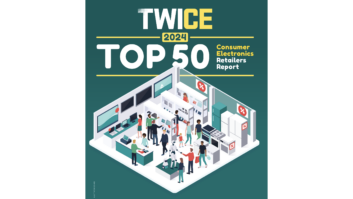
As the world returns to normal, return to office is top of mind for all. But recent research from EPOS has found that there is a notable divergence in the expectations of decision makers and employees regarding the return to work: 56 percent of global business decision makers expect an increase in employee time spent at the office; however, when looking at employee expectations the figure falls to just 26 percent.
Integrated audio and video solutions have become an essential tool for professionals today as hybrid working patterns begin to take shape globally. The new research, which was commissioned by EPOS and conducted by Ipsos, finds that end users today spend seven hours per week in virtual meetings on average—an increase of two hours per week in just the last year.
In a world rebounding from a pandemic, progressive businesses need to embrace the best of both worlds. The benefits of virtual working are now well known, and employees are keen to preserve some of the convenience, flexibility, and adaptability that remote work promises. Ninety-nine percent of decision-makers in the workplace also see the advantage of virtual meetings, which deliver time and cost savings as well as enabling meetings to take place seamlessly across time zones.
Bridging the Gap between Decision-Makers and Employees
As lockdowns begin to ease and signs of normal life return, many decision-makers are anticipating the advantages of a genuinely hybrid model for the workplace. However, there are notable divergences between the expectations of decision-makers and employees regarding the return to work across all markets.
This disparity between employees and employers signals a global trend, with the widest gulf in the US, where 74 percent of employers expect workforces to return to the workplace, compared with just 29 percent of employees surveyed. These results suggest that on a global level, decision-makers need to engage and align with their employees to better understand their expectations. By understanding and meeting employee needs, business leaders create a strong hybrid working model that will in turn help secure future talent. Forward-thinking sectors are already recognizing an opportunity to fully support remote work programs to tap into a vast and global talent pool, thereby creating greater business agility while gaining significant cost savings.
Alleviating the Pain Points of Bad Audio
For employees across all markets, critical challenges in the hybrid working setup stem from bad audio or visual tech experiences with close to all (89 percent) end users currently experiencing difficulties in virtual meetings. The most common experience issues include misunderstanding what’s being said in a meeting (26 percent), and missing out on critical information (21 percent), while a further 17 percent say that they appear unprofessional because of poor sound experiences. The experience issue extends to collaboration tools used, with 16 percent reporting that the equipment they use is “not fit for purpose” while 13 percent report having difficulties seeing details shared on screen.
Over time these negative experiences can affect employees’ ability to focus, engage, and actively contribute. Fortunately, decision-makers are recognizing the impact that bad audio can have on their business and employee wellbeing: 88 percent accept it has caused their company issues over the past year. A further 77 percent believe the right technology can overcome collaboration experience issues and are prepared to make necessary investments in equipment and infrastructure. Solving technology problems could also go far in persuading employees that virtual meetings can be just as good going forward.
Successful businesses in the hybrid workplace will be defined by their ability to support people with the right technology solutions, tailored to needs and expectations. Technology solutions today offer a clear way to bridge the gap between differing expectations and priorities: high-quality, integrated audiovisual solutions have the potential to bring the best of both worlds to post-pandemic work. Moreover, in helping to eliminate distractions, collaboration technology both enhances human interaction and increases professionalism, helping businesses to reach a gold standard for the hybrid workplace.
Get the full Virtual Collaboration report here.
This article originally appeared on avnetwork.com
See also: Another View: How To Win The War For Talent In The Gig Economy











